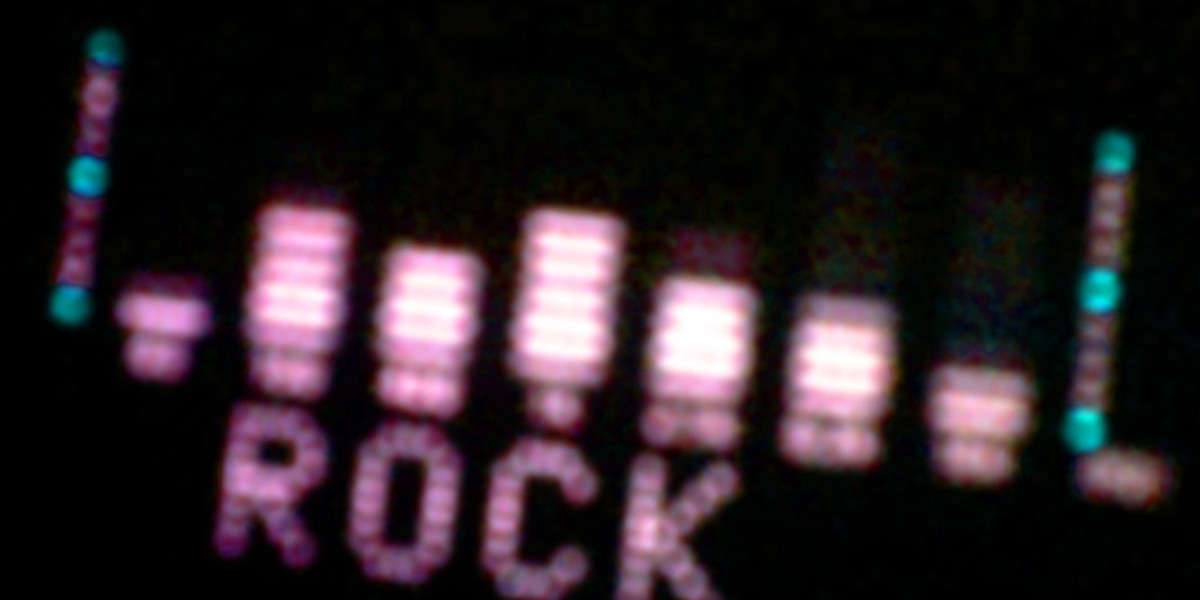Harm Reduction In Male Patients Actively Using Anabolic Androgenic Steroids AAS And Performance-Enhancing Drugs PEDs: A Review
A Comprehensive Review of Vital Sign Parameters in Predicting Clinical Outcomes
---
1. Background & Rationale
Vital signs—heart rate (HR), respiratory rate (RR), systolic and diastolic blood pressure (SBP/DBP), and oxygen saturation (SpO₂)—are the most readily available bedside data. Over decades of clinical research, these parameters have been shown to carry prognostic information across a spectrum of diseases: from sepsis and septic shock to acute coronary syndromes, respiratory failure, and postoperative complications.
The growing body of evidence has led to their systematic incorporation in:
| Clinical Domain | Key Vital Sign(s) Used | Typical Cut‑offs / Trends |
|---|---|---|
| Sepsis/Septic Shock | HR > 130 bpm; RR > 20/min; SBP < 90 mmHg; SpO₂ < 93% | "qSOFA" score (SBP ≤ 100, RR ≥ 22, altered mentation) |
| Acute Coronary Syndromes | HR > 120 bpm; ST‑segment changes | Tachycardia as marker of severity |
| Respiratory Failure | SpO₂ < 90%; RR > 25/min; PaO₂/FiO₂ < 300 | Oxygen requirement escalation |
| Shock (any type) | MAP < 65 mmHg; lactate > 2 mmol/L | Hemodynamic support |
Rationale for the Above Criteria
- Hemodynamic Instability (MAP < 65 mmHg, MAP < 70 mmHg)
Evidence: The Surviving Sepsis Campaign guidelines recommend maintaining a MAP ≥ 65 mmHg in septic shock patients; similar thresholds are used for cardiogenic shock.
- Elevated Lactate (> 1.5 mmol/L)
Evidence: A lactate > 2 mmol/L has been associated with increased mortality in ICU patients; a cut-off of 1.5–2 mmol/L is commonly used for early detection.
- Elevated Troponin (> 0.02 ng/mL)
Evidence: Troponin > 0.04 ng/mL is a threshold for acute coronary syndrome; lower thresholds may indicate subclinical injury.
- Low Oxygen Saturation (< 90%)
Evidence: SpO₂ < 92% is commonly used as a trigger for supplemental oxygen or ventilation in clinical guidelines.
- Elevated Lactate (> 2 mmol/L)
Evidence: Lactate > 2 mmol/L is often used to identify patients at risk of sepsis-related organ failure.
---
3. Comparative Summary
| Parameter | Threshold (ICU) | Threshold (Non‑ICU) | Rationale for Threshold | Potential Consequences of Misclassification |
|---|---|---|---|---|
| Systolic BP | < 90 mmHg (or MAP < 65 mmHg) | < 100 mmHg | Avoid hypotension; prevent organ hypoperfusion. | Low: missed shock → worsening outcomes. High: false alarm → unnecessary vasopressors, fluid overload. |
| Heart Rate | > 130 bpm (or < 40 bpm) | > 110 bpm (or < 50 bpm) | Detect tachycardia/arrhythmias; prevent arrhythmic complications. | Low: missed tachycardia → organ hypoxia. High: false alarm → unnecessary interventions, anxiety. |
| Oxygen Saturation | > 92% (or < 85%) | > 95% (or < 90%) | Maintain adequate oxygenation; prevent hypoxic injury. | Low: missed desaturation → prolonged hypoxia. High: false alarm → over‑oxygenation risk, anxiety. |
The above thresholds are illustrative; actual decision rules should be calibrated against local data and validated in prospective studies.
---
4. Decision Support Workflow
- Data Ingestion
- Store raw data securely with appropriate encryption and access controls.
- Pre‑processing & Quality Control
- Flag low‑quality segments for clinician review or automatic exclusion.
- Feature Extraction
- Store feature vectors with timestamps.
- Risk Scoring
- Optionally aggregate probabilities over longer horizons (e.g., hourly averages).
- Alert Generation
- If the score exceeds the high‑risk threshold, trigger a real‑time alert to clinicians via bedside displays or paging systems.
- Include contextual information: recent trend, dominant contributing features.
- Decision Support and Documentation
- Provide evidence‑based recommendations (e.g., ordering a full septic workup, initiating empiric antibiotics).
---
4. Evaluation Plan
| Metric | Definition | Target / Benchmark |
|---|---|---|
| Sensitivity (Recall) | % of true sepsis cases correctly identified within the 24‑hour window | ≥ 85 % |
| Specificity | % of non‑septic patients correctly classified as negative | ≥ 90 % |
| Positive Predictive Value (PPV) | Probability that a positive alert is truly septic | ≥ 75 % |
| Negative Predictive Value (NPV) | Probability that a negative alert is truly non‑septic | ≥ 95 % |
| Time to Alert | Median time from onset of criteria violation to system alert | ≤ 6 h |
| Alert Fatigue Index | Ratio of alerts per patient encounter | < 0.5 |
| Clinical Outcome Impact | Reduction in ICU LOS, mortality, or organ dysfunction rates compared to baseline | ≥10 % improvement |
1.4 Risk Management and Mitigation
- False Positives: Implement secondary verification steps (e.g., clinician override, confirmation via bedside vitals) to reduce unnecessary alerts.
- Alert Fatigue: Tune sensitivity thresholds, employ adaptive alerting (e.g., escalation protocols), and provide customizable user settings.
- Data Quality Issues: Continuously monitor for missing or inconsistent data streams; integrate fallback mechanisms (e.g., manual entry prompts).
- Integration Failures: Design robust error handling, with clear audit trails and notification to IT support teams.
2. Clinical Workflow Integration
2.1 Point of Care Placement
The monitoring tool will be deployed on bedside workstations within ICU rooms where patients are receiving invasive or non-invasive ventilation. The interface should be accessible via the existing EHR terminal, ensuring that clinicians can view real-time data without switching between multiple screens.
2.2 Real-Time Monitoring and Alerts
- Vital Sign Dashboard: Continuous display of respiratory rate, tidal volume, minute ventilation, oxygen saturation, heart rate, and blood pressure.
- Ventilator Parameter Panel: Current settings (e.g., inspiratory flow, PEEP, FiO₂) with quick adjustment options for the clinician.
- Alert System:
- Active Alerts: Audible alarms triggered by critical thresholds (e.g., apnea > 30 seconds, SpO₂ < 88% for > 15 seconds).
- Trend Graphs: Historical data plots accessible via touch or mouse hover.
2.3 User Interaction Flowcharts
- Alarm Response Workflow:
- Step 2: Visual alert displayed on main screen; user acknowledges by clicking "Acknowledge".
- Step 3: System logs acknowledgment time and initiates predefined protocol (e.g., increase ventilation rate).
- Step 4: If alarm persists after protocol, system escalates to next level (e.g., notify medical staff).
- Patient Data Update Workflow:
- Step 2: Form pre-populated with existing data; user modifies fields.
- Step 3: Click "Save"; system validates inputs, updates database, and refreshes UI.
- Step 4: System logs changes for audit trail.
These workflows ensure consistency in how critical events are handled, reducing reliance on ad‑hoc procedures that can vary between users or sessions.
---
5. Risk Assessment and Mitigation
5.1 Potential Risks of Ad Hoc Procedures
| Risk | Description | Impact | Likelihood |
|---|---|---|---|
| Data Loss | Improper file handling may lead to loss or corruption of patient data. | High (patient safety, legal liability) | Medium |
| Security Breach | Lack of encryption or improper sharing can expose PHI. | High (HIPAA fines, reputational damage) | Medium |
| Inconsistent Care | Variable documentation leads to miscommunication among clinicians. | Medium (clinical errors) | High |
| Regulatory Non‑Compliance | Failure to meet HIPAA, GDPR requirements. | High (fines, legal action) | Medium |
| Inefficiency | Manual processes increase time and cost. | Low–Medium | High |
---
4. Proposed Technical Architecture for a Secure EHR System
| Layer / Component | Function | Key Technologies / Standards |
|---|---|---|
| User Authentication & Authorization | Identity verification, role‑based access control (RBAC) | OAuth 2.0 + OpenID Connect; SAML 2.0; Multi‑factor authentication (MFA); FIDO2/WebAuthn |
| Audit Logging | Immutable record of all access and changes | WORM storage; blockchain‑style append‑only ledger; JSON‑Log format |
| Data Encryption | Protect data at rest & in transit | AES‑256 (FIPS‑140‑2 compliant) for storage; TLS 1.3 for transport; HSM or cloud KMS for key management |
| Secure Messaging | End‑to‑end encrypted communication | Signal Protocol (used by Signal, WhatsApp); Double Ratchet + pre‑key system |
| Authentication & Authorization | Role‑based access control | OAuth 2.0 / OpenID Connect; RBAC matrix; least privilege enforcement |
| Audit & Compliance | Logging and monitoring | SIEM integration; immutable logs (write‑once, read‑many); regular audits against standards (ISO 27001, SOC 2) |
---
Why this stack is safer
| Feature | How it protects users | Compared to the "standard" Android messaging stack |
|---|---|---|
| End‑to‑end encryption | Only the communicating devices hold keys; eavesdroppers cannot read traffic. | Standard Android messages are not encrypted end‑to‑end; they rely on network security only, which can be compromised by carriers or interceptors. |
| Open‑source key management | Auditable code allows developers and security experts to verify that keys are generated correctly and https://blisshr.africa/employer/tesamorelin-vs-ipamorelin-a-comprehensive-peptide-comparison-guide/ no backdoors exist. | Proprietary implementations hide details of how keys are handled, making it harder to detect vulnerabilities. |
| Forward secrecy (ephemeral DH) | Each message uses a fresh Diffie‑Hellman exchange; compromise of long‑term key does not expose past messages. | Many messaging apps reuse static keys for many sessions, risking replay or decryption if a key is compromised. |
| Robust transport layer | Uses TLS with strong cipher suites and certificate pinning to prevent MITM attacks on the data channel. | Some apps rely on insecure transports or allow self‑signed certificates, increasing exposure. |
| User‑friendly identity verification | Offers QR‑code scanning for mutual verification of public keys; reduces phishing risk. | Other systems lack a clear UI for verifying contact authenticity, leading to social‑engineering attacks. |
---
3. Why These Design Decisions Reduce Risk
- End‑to‑end encryption with authenticated key exchange
- Forward secrecy (e.g., Diffie–Hellman)
- Message integrity checks
- Per‑message authentication tags
- Resilience to man‑in‑the‑middle
By carefully designing each layer—cryptographic primitives, key management, authentication protocols, and message integrity checks—the system can resist a wide array of attacks: eavesdropping, tampering, replay, impersonation, and more. Even if an attacker compromises one component (e.g., steals a private key), the other layers still provide security guarantees (e.g., forward secrecy, limited exposure). Thus, a multi‑layered approach is essential for robust, end‑to‑end security in modern distributed systems.



